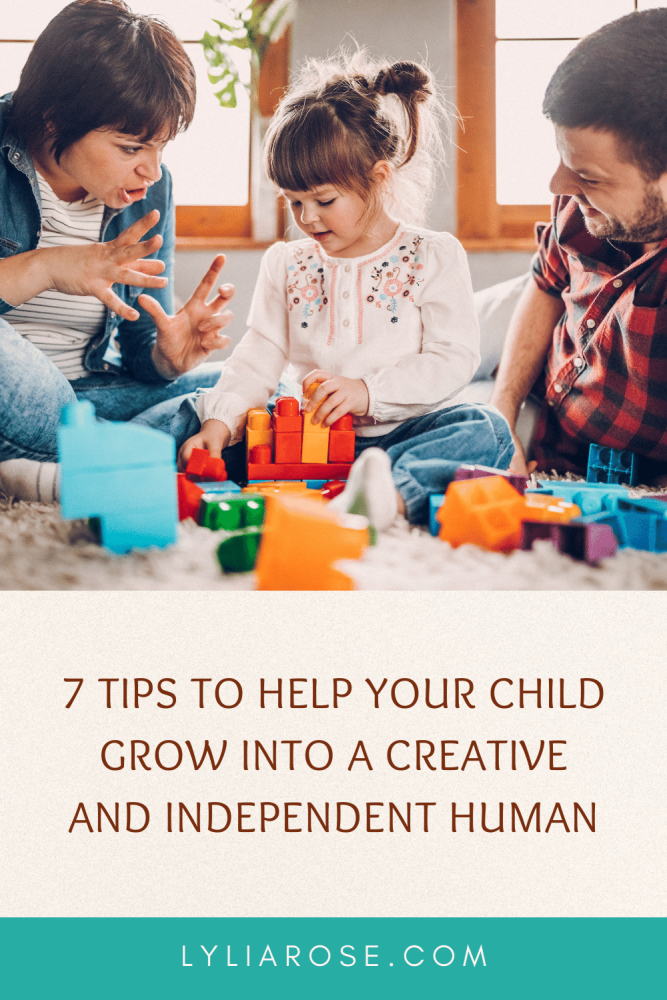7 Tips to Help Your Child Grow into a Creative and Independent Human
Posted on

Raising children is about much more than meeting their basic needs. As parents, we want our children to thrive, to feel confident in themselves, and to grow into capable, curious, and resilient individuals. Encouraging creativity and independence is one of the best ways to help children develop the life skills and confidence they’ll need as adults.
But where do you start? Nurturing independence and creativity doesn’t happen overnight — it’s a gradual process shaped by everyday habits, opportunities, and encouragement. By giving children space to explore, problem-solve, and express themselves, you help them discover who they are and what they can achieve.
Here are seven practical tips, along with extra strategies, to help your child grow into a creative and independent human.
1. Give Them Opportunities to Explore Their Creativity
Creativity isn’t just about art — it’s about imagination, curiosity, and problem-solving. Children who are encouraged to be creative often develop stronger critical-thinking skills and resilience.
Ways to nurture creativity include:
-
Providing materials for open-ended play (paints, building blocks, clay, Lego).
-
Visiting museums, galleries, or science centres for inspiration.
-
Encouraging music, dance, or drama.
-
Allowing them to invent their own games and stories.
Don’t underestimate the power of modelling creativity yourself. Children learn by example, so let them see you draw, write, garden, or even cook in inventive ways. Show them that creativity is about trying, experimenting, and sometimes making mistakes.
Encouraging risk-taking within safe boundaries also helps. Whether it’s experimenting with colours in a painting or trying a new sport, children gain confidence when they realise mistakes are part of the creative process.
2. Encourage Independence in Everyday Life
Independence begins with small steps. Giving children age-appropriate responsibilities and decision-making opportunities builds confidence and self-reliance.
Examples include:
-
Choosing their clothes for the day.
-
Helping with simple household chores like setting the table or watering plants.
-
Packing their own school bag.
-
Planning part of a family meal.
Independence isn’t about leaving children to do everything on their own — it’s about guiding them while allowing space to grow. By gradually stepping back and letting them figure things out, you’ll see them become more capable and confident.
Remember, each child develops at their own pace. Avoid comparisons and focus on celebrating their progress.
3. Help Them Discover Their Passions
Children flourish when they have something they love to focus on. Passion creates motivation, builds persistence, and nurtures creativity.
To help your child find what excites them:
-
Introduce a variety of activities (sports, music, crafts, coding, drama).
-
Observe what they naturally gravitate towards.
-
Ask teachers, carers, or relatives what strengths they notice.
-
Support their interests even if they differ from your own.
If your child discovers a love of art, invest in sketchbooks or classes. If they love football, encourage regular practice. The goal isn’t to push them into a career path but to give them the tools and encouragement to pursue what brings them joy.
Passions often change as children grow, and that’s fine — exploring different interests is part of developing independence.
4. Teach Life Skills Early On
Life skills are the foundation of independence. Teaching children how to look after themselves not only prepares them for adulthood but also builds their confidence and resilience now.
Start with simple, age-appropriate skills such as:
-
Cooking basic meals.
-
Doing laundry.
-
Tidying their room.
-
Managing pocket money.
As they get older, introduce more advanced skills like basic DIY, car maintenance, or budgeting. Practical skills give children a sense of achievement and reduce their reliance on others.
Don’t forget social and emotional life skills. Encourage them to communicate clearly, manage conflicts calmly, and show empathy towards others. These are just as important as practical tasks in shaping well-rounded, independent individuals.
5. Support Their Dreams and Aspirations
Every child has dreams, whether it’s becoming an astronaut, starting a business, or writing stories. Supporting these ambitions shows children that their ideas are valid and worth pursuing.
Practical ways to support their dreams include:
-
Helping them set small, achievable goals.
-
Finding mentors, role models, or classes.
-
Encouraging perseverance when things get tough.
-
Celebrating progress, not just outcomes.
Supporting dreams doesn’t mean unrealistic pressure. It’s about being their cheerleader while helping them develop realistic steps to achieve what matters to them.
When children feel believed in, they gain the confidence to believe in themselves — a key part of growing into an independent adult.
6. Allow Them to Make Mistakes (and Learn From Them)
Mistakes are one of life’s most valuable teachers. Shielding children from failure denies them the chance to learn problem-solving skills and resilience.
When your child makes a mistake:
-
Stay calm and supportive.
-
Talk through what went wrong and what could be done differently.
-
Emphasise that mistakes are normal and part of learning.
-
Share examples of your own mistakes and how you learned from them.
Allowing children to fail safely builds confidence in their ability to cope with challenges. Over time, they learn that setbacks are not the end of the world but opportunities to grow.
7. Help Them Find Their Own Voice
Encouraging children to express their opinions and make choices helps them develop independence and self-confidence.
Ways to nurture their voice include:
-
Asking for their opinion on family plans.
-
Letting them choose books, meals, or hobbies.
-
Listening respectfully when they share thoughts or concerns.
-
Encouraging them to stand up for themselves in respectful ways.
Children who feel heard learn that their opinions matter. This sense of agency empowers them to take ownership of their decisions as they grow.
Additional Ways to Nurture Creativity and Independence
Beyond the seven core tips, here are extra strategies you can weave into everyday life:
Embrace the Role of Play
Play is how children learn about the world, test ideas, and develop problem-solving skills. Encourage imaginative play with toys, role-play games, or simply unstructured free time.
Balance Independence with Boundaries
Independence doesn’t mean complete freedom. Children still need clear, loving boundaries to feel safe. By setting limits while offering choice within them, you strike the right balance.
Model the Qualities You Want to See
Children copy what they see. If you demonstrate independence, problem-solving, and creativity in your own life, they’re more likely to adopt the same qualities.
Encourage Problem-Solving in Daily Life
Instead of rushing to fix every issue for your child, ask questions like: “What do you think we should do?” This helps them think critically and develop solutions independently.
Final Word
Helping your child grow into a creative and independent human is one of the most rewarding aspects of parenting. It takes patience, encouragement, and a willingness to let them make their own discoveries. By giving them opportunities to be creative, supporting their passions, teaching life skills, and allowing them space to learn from mistakes, you equip them with tools they’ll use for life.
Creativity fuels imagination and innovation, while independence builds resilience and confidence. Together, they set children up not just to succeed but to thrive in whatever path they choose. Start small, be consistent, and watch your child grow into the capable, confident, and creative individual they’re meant to be.
